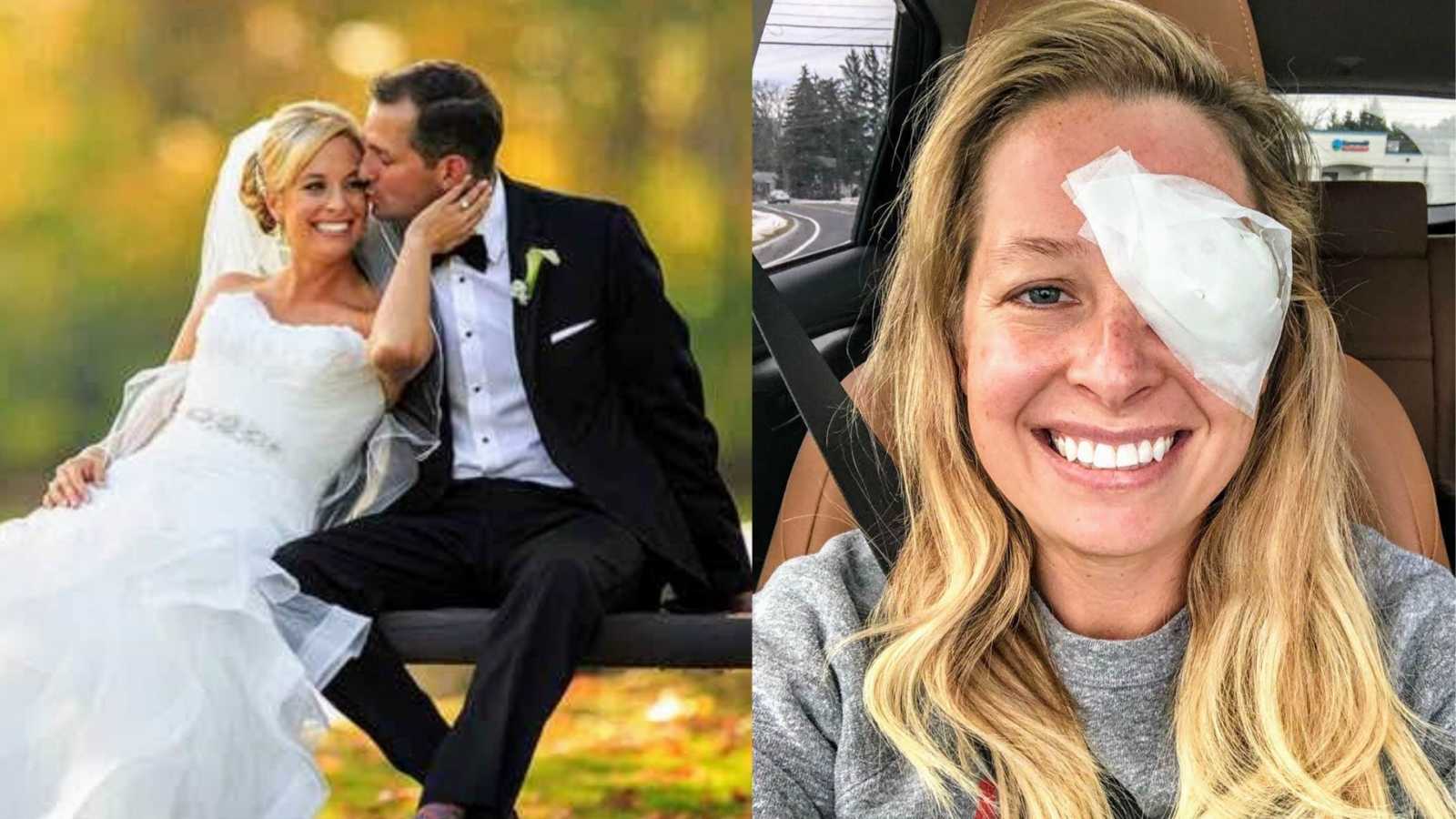Growing Up An Athlete
“Underdog (NOUN) – a competitor thought to have little chance of winning a fight or contest.
I have always been a fan of the underdog. The underdog is built upon hustle and heart, and the belief anyone can overcome any type of adversity. And honestly, this is how I’ve always viewed myself. An underdog.
I grew up a 4-sport athlete with my main focus on soccer. I don’t feel as if I was born with natural skill or talent; I was never the most gifted athlete. Beginning in my teens, I also struggled with anxiety and depression. Living with mental illness made me feel ashamed, so I hid it. I felt like an outsider, never capable of any good. But I’ve always prided myself on the simple fact no one ever worked as hard as I did.
In elementary school, I was usually the slowest kid in any race. In middle school, I finally started to grow into my body, becoming faster, yet still awkward and uncoordinated. I was cut from the modified basketball team in 7th grade. By the time I hit high school, I was constantly running, playing soccer, and picking up any sport I could get my hands on, always working to be better. Playing sports and being an athlete quickly became my sole identity, and helped me cope with my mental illnesses. When playing a sport, my sport, I felt untouchable. No matter the internal struggles I was battling and beating myself up about, when on a field or court, no one could beat me or put me down.
This led me to playing Division 3 collegiate soccer — a dream of mine growing up. In college, thanks to my ‘lightning’ speed, I was approached by the lacrosse coach. I accepted the challenge to try a new sport as a walk-on, and worked endlessly to learn the game, eventually becoming a starter. Like earlier in my life, I refused to believe anyone could work harder than me. Yet, I still always felt as if my back was up against the wall due to my own inner demons.
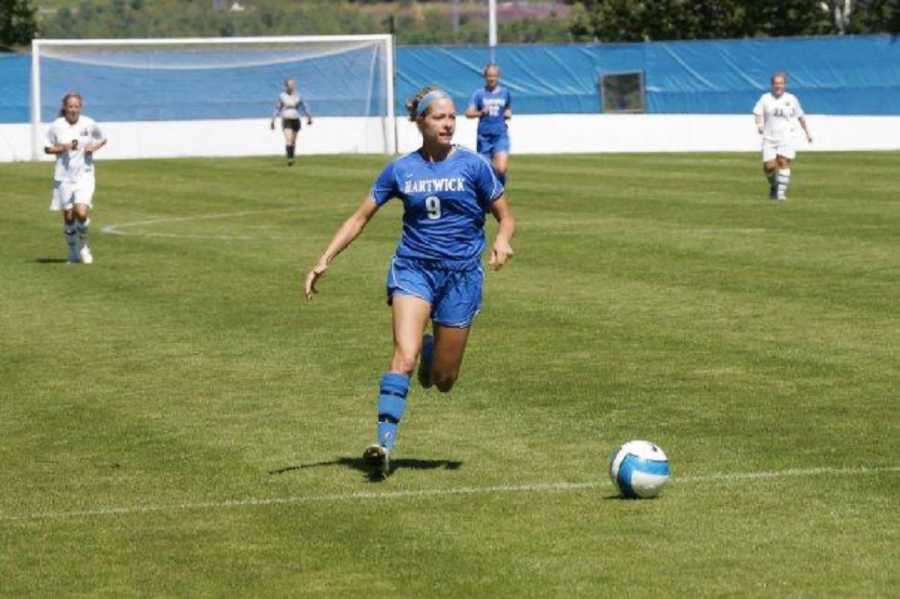
Uveitis Diagnosis
I graduated from Hartwick College in 2008, and continued playing soccer three to four times a week. I considered myself lucky, because at the time, I felt I could always push my body to the limit, take on any challenge (like running my first half marathon with barely any training), and always be ready to work twice as hard the next day. Until one day, in early 2010.
I was 22 years old, with a group of friends in Acapulco on Spring Break. Toward the end of a (as you can imagine) no-care-in-the-world party trip, I woke up one morning with blood-shot eyes. I could barely see two feet in front of my face. Everything was a blur. I spent the last two days of our trip like this, without any change. Once I was back home in the states, I contacted a nearby ophthalmologist, went through multiple tests, and was diagnosed with uveitis, a form of eye inflammation.
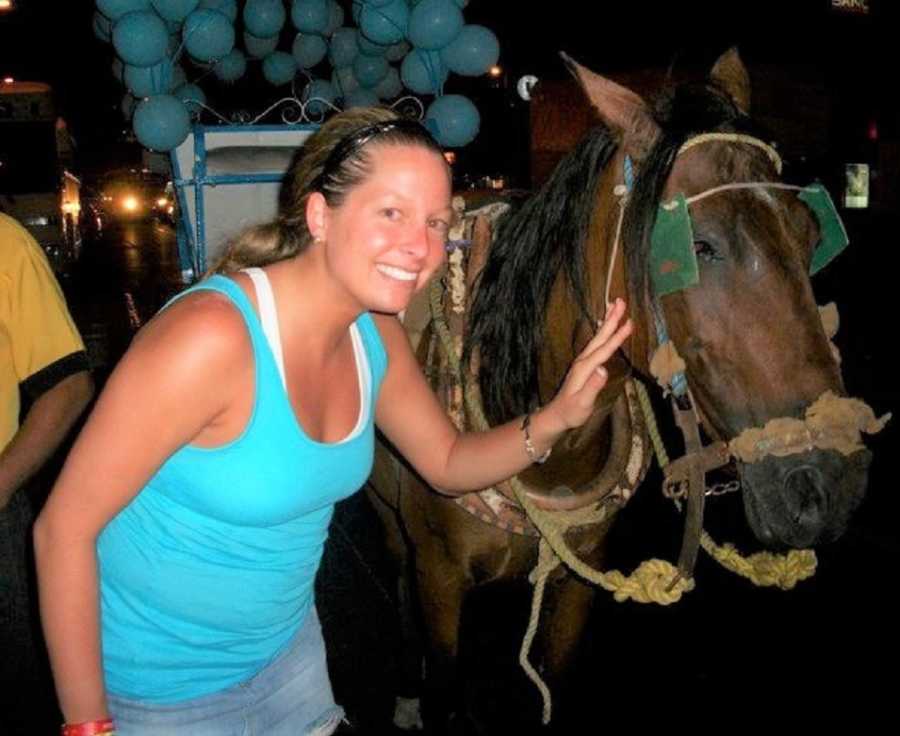
Uveitis is a group of diseases that produce swelling and destroy eye tissue. These diseases can cause minor or severe vision loss. The warning signs often come on suddenly and get worse quickly. They include eye redness, pain, and blurred vision. The condition can affect one or both eyes. To treat this, I was prescribed a high dosage of prednisone for two weeks, and was told I should have no problem from there on out. Prednisone is used as an anti-inflammatory or an immunosuppressant medication.
Here’s the thing: what they don’t tell you about prednisone, is it causes weight gain (and ‘moon face’ – no joke, it’s a real thing). It also increases aggression, agitation, irritability, swelling, heart rate, and it prevents a good night’s sleep. These awful side effects made dealing with depression and anxiety so much harder. After a few tests, the doctor could not find the cause for this sudden outbreak, and told me it was common to have one random occurrence of this disease. But when the symptoms came back six weeks later, I was sent to a retina specialist to handle my idiopathic case, and put back on a high dose of prednisone, this time for four weeks. At the time, I thought this would be the hardest challenge I would face with this disease. I could not have been more wrong.
Years went by with no further outbreaks, and from 2011 to 2014, I stopped seeing my retina doctor and rarely even thought of the disease. One day back in 2012, two days before my first marathon, I woke up with some symptoms. But in a day, it went away and all was fine again. I chalked it up as a fluke, just like that initial ophthalmologist had suggested. It wasn’t until two days before my bachelorette party, Labor Day weekend of 2014, and a month before my actual wedding, I woke up, once again, barely able to see two feet in front of my face.
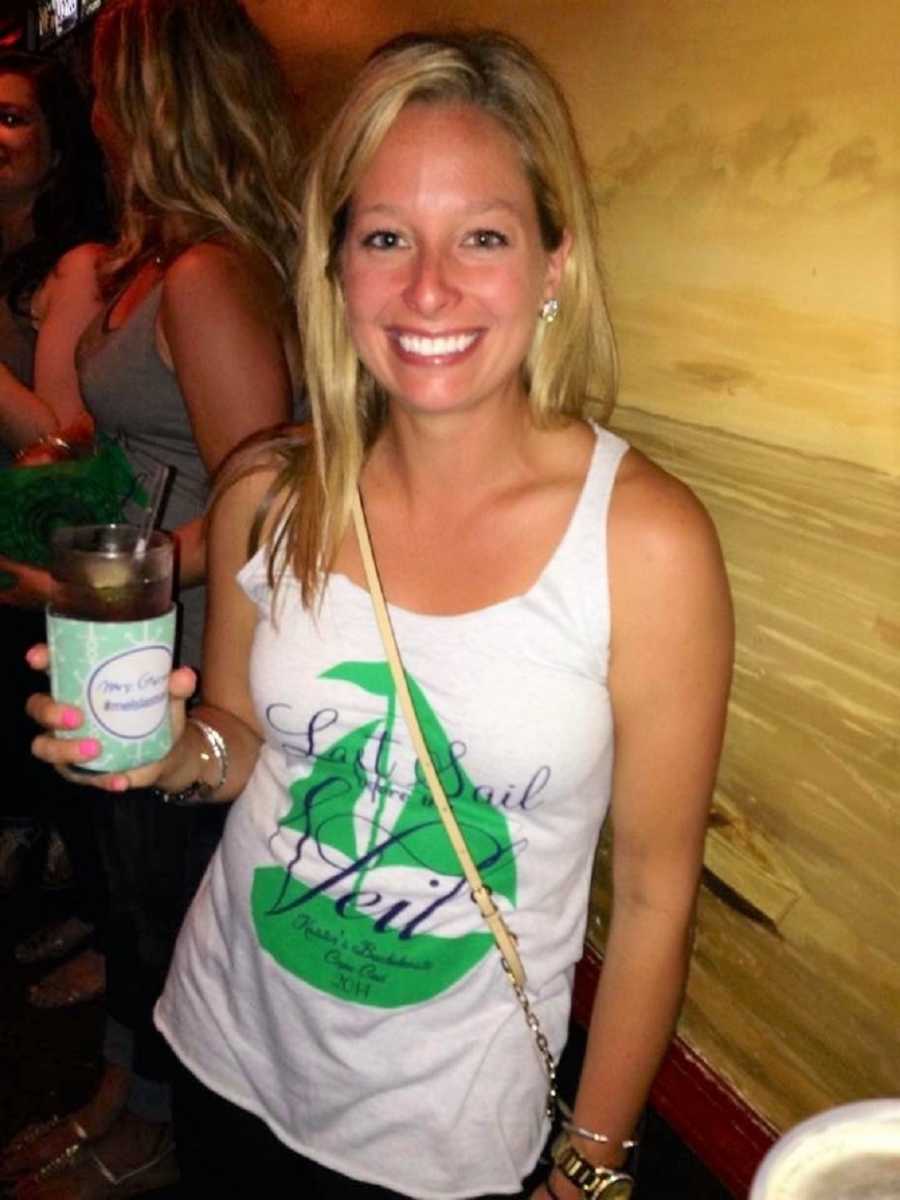
I got right in to see my retina specialist and as expected, the inflammation cells in both my eyes were heavily present again. My doctor (who is absolutely amazing, might I add, and has been my doctor for ten years now) instructed to treat it with a high dosage of prednisone again. I begged and pleaded with her to find another way. Here I was, 26 years old, a month before my dream wedding day; I had the most beautiful Pronovias wedding dress, and desperately wanted to look good in my wedding pictures. What I did not want was to blow up like a balloon due to steroids again.
My doctor accepted my wishes and prescribed steroid eye drops to put in each eye, every hour, on the hour. I was naive and didn’t take it seriously. I told myself it was from all the wedding stress and I would be fine in a couple weeks. That right there, was the true beginning of living with this awful disease.
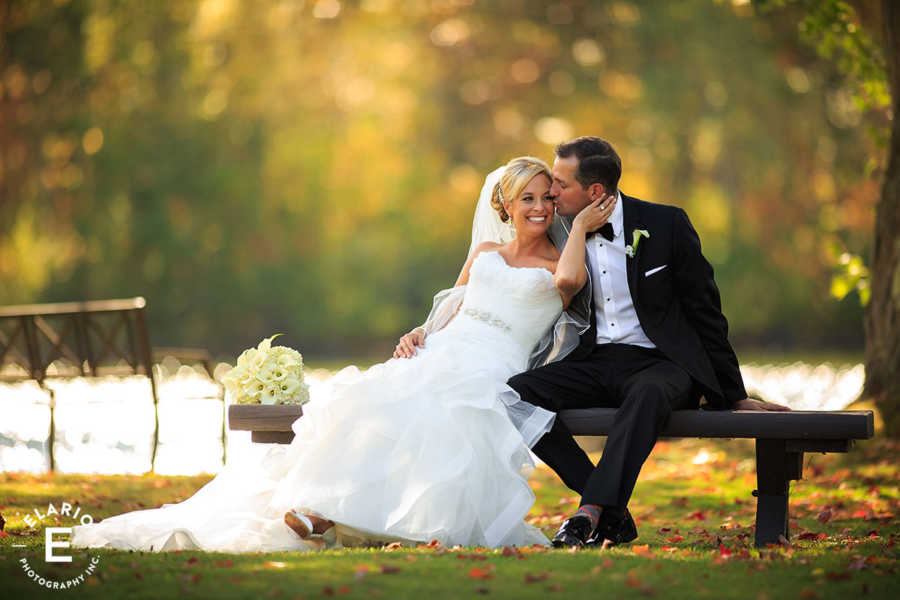
Living With Chronic Inflammation
Uveitis is a rare disease with fewer than 200,000 cases per year in the United States. My case, Intermediate Uveitis (inflammation of the inside of the eye, specifically the layer of the eye called the uvea) is the least common type of uveitis, making up only 7-15% of cases. It’s more likely to have chronic and relapsing inflammation. The scariest part is 40% of patients will completely go blind. Symptoms include eye pain, blurred vision, decreased vision, and (intense) light sensitivity.
Living with a rare disease many cannot physically see is complicated and confusing, and unfortunately has become a big part of who I am. There is no ‘clear cut’ or ‘typical’ case for intermediate uveitis, which makes it even harder to describe and help people understand. For the past ten years, my life has been filled with head MRI’s, monthly blood tests, and a lot of medical appointments with specialists to try to find the cause. But unfortunately, still no answers. Usually linked to an autoimmune or inflammatory disease, I have been tested for (what seems like) everything under the sun. But still, my uveitis is noted as idiopathic.
Treatment of multiple eye drops, every hour, on the hour, went on for months. Still, I continued to live the active life style I always had, and pushed my body as hard as I could. With the decision to not use oral steroids to treat my case, days were filled with reoccurring retina appointments, injections to my eye, and weekly scans/blood work. Looking back, I was so unbelievably naive. I thought, ‘This is going to go away. I’ll never go blind. It won’t happen to me. It’s never going to get worse than this.’ This is when my eyesight first started to deteriorate, and the chronic inflammation progressively became worse.

This was when my doctor first mentioned the word I had been dreading — immunosuppression. The partial or complete suppression of the immune response. It’s commonly known as a form of chemotherapy and a treatment for patients after a transplant operation, to help the survival of an organ.
At this point, my husband Steve and I had been married for a little over a year, and knew we wanted to start a family. Immunosuppression, for a uveitis patient, would be at least two years of treatment without being able to get pregnant. We knew we had a hard decision to make: treat my deteriorating eyes or start our family. For me, family won immediately. I often thought, ‘If I had a life-ending disease, I would want to live out my life the way I’ve always wanted.’ And I felt the same way about the possibility of going blind. The more time being able to physically watch my daughter or son grow up, the better.
Motherhood Journey With Uveitis
Within six months, I found out I was pregnant. Still under the care of my retina doctor, I continued my steroid drops because they were safe with pregnancy. In my final trimester, my eye inflammation went away. I was ecstatic! My doctor informed me there had been cases of women experiencing remission during pregnancy due to ‘a foreign body (the fetus) growing inside the mother, and the immune system working overtime.’ Even though she told me this wasn’t a sure fix and my uveitis would eventually come back, I didn’t want to believe her.
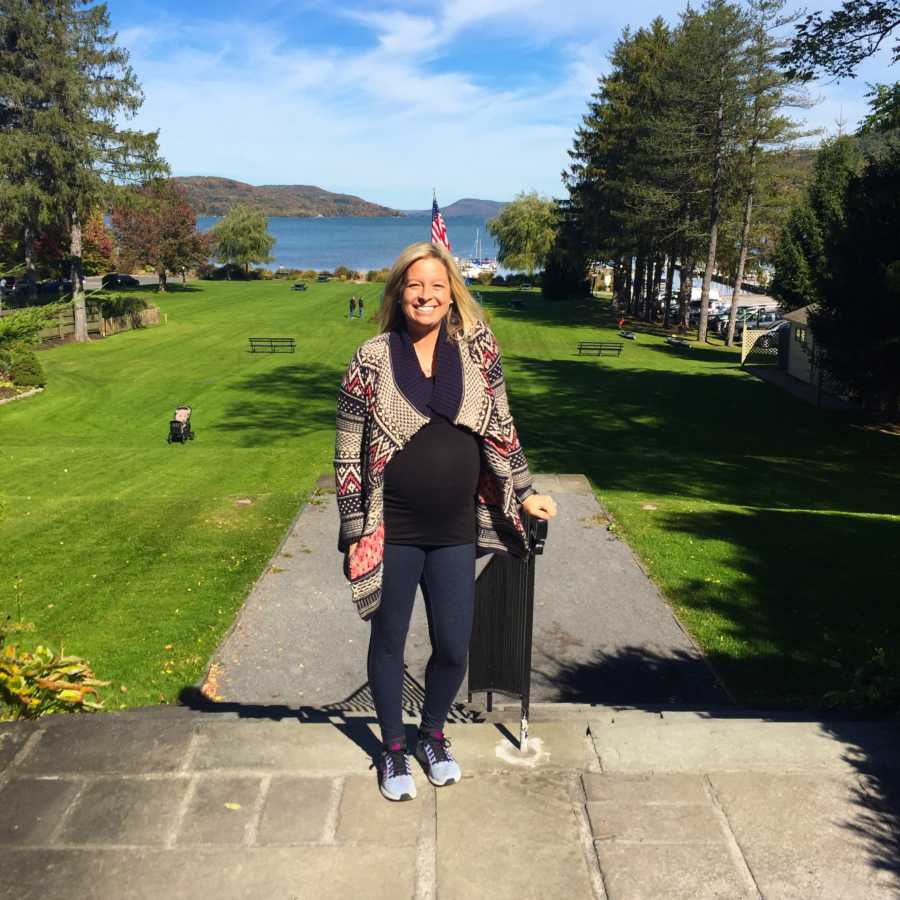
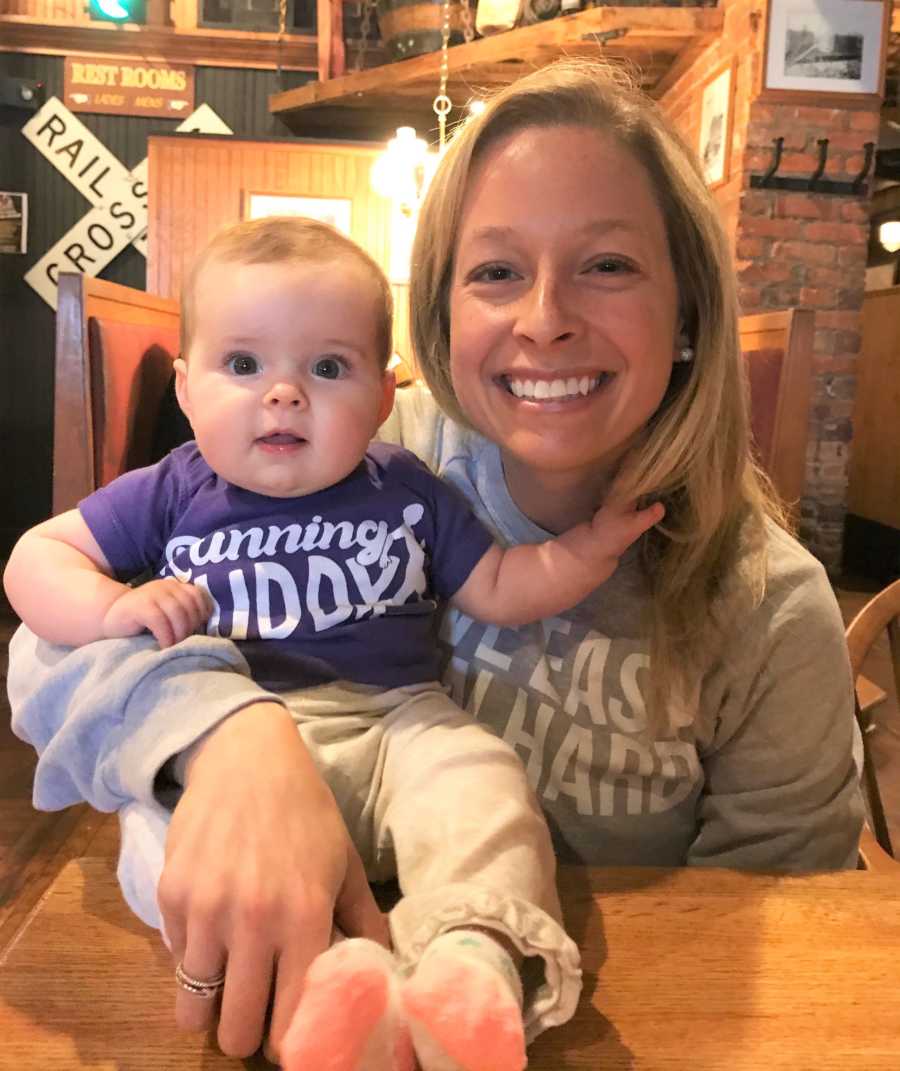
It wasn’t until the beginning of 2018, when my daughter, Ellie, was a little over a year old, the disease came back stronger than ever. I was still routinely seeing my doctor every three to four months. It was in one of these visits, my doctor found inflammation cells once again. I cried. And I mean, I really cried. I thought I was in the clear, able to live a normal life again and not worry about this stupid disease. I refused immunosuppression once again. I was struggling heavily with postpartum depression and could not fathom giving up my running therapy.
Running and training was the one thing holding me afloat and I thought, ‘How can I run and push my body if my immune system is constantly suppressed?‘ My mind was not in the right place, and I couldn’t NOT be able to train hard. It’s who I was; most importantly, it was helping me survive my first years of motherhood.

Glaucoma Diagnoses
So it was more steroid drops, multiple times a day. I didn’t fully grasp the damage I was doing to my eyes with the more topical treatments I endured. At the beginning of the summer of 2018, I was up to four different eye drops, four to six times a day, each eye! I came to the realization this disease I had lived with, for the past eight years, was not a fluke. At the end of the summer, I went to a yearly appointment with my ophthalmologist, where I was first diagnosed with glaucoma.
Glaucoma is a group of eye conditions damaging the optic nerve, the health of which is vital for good vision. This damage is often caused by an abnormally high pressure in your eye, and is one of the leading causes of blindness for people over the age of 60.
When my ophthalmologist checked, my left eye pressure was in the 30’s. He was alarmed and insisted I get in to a glaucoma specialist right away. I was seen and tested (with my newest long-term doctor) within 48 hours. They found I had lost 50% of the vision in my left eye and needed surgery immediately. This was five weeks before my 7th marathon, during a training cycle I was absolutely crushing.
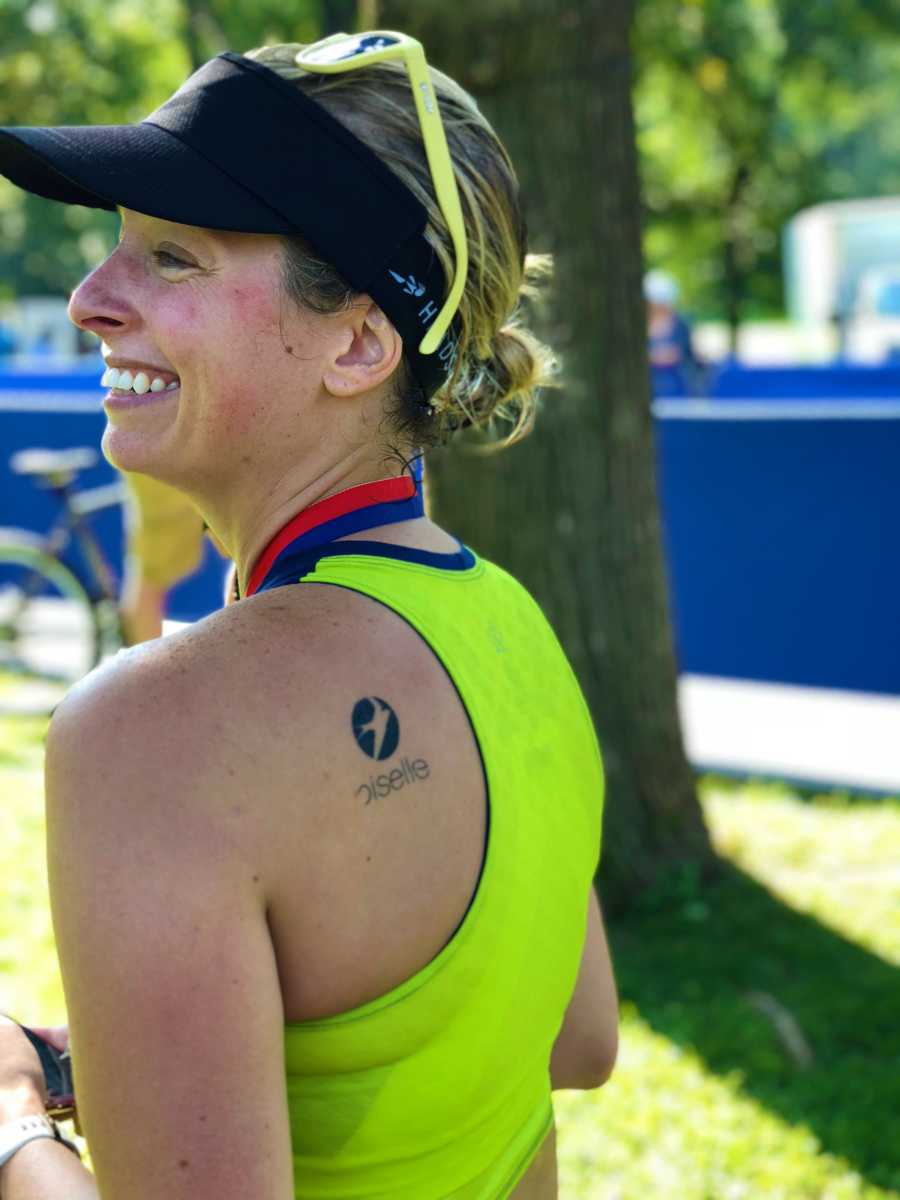
I didn’t want to accept defeat. How could this disease have, once again, gotten much worse? I was angry, mad at the world. How could this be happening to me? All those years I lived in denial uveitis could take over my life, my body. Yet here I was, at the age of 31, facing another barrier in the way of my once resilient body. And all before my 7th marathon; I had worked so hard and spent so much time away from my family while training. (Insert extreme mom guilt)
Running had become my anchor. After giving up soccer, due to back problems, running filled a void I never thought could be filled again. It’s been a form of therapy for me, helping me through anxiety-stricken days and teaching me to never give up, to keep putting one foot in front of the other. Often, it’s hard to get out the door, especially when you feel broken down, or the anxiety piles up so badly you feel like you can’t move. But once I do, it’s as if a weight is lifted. Those suffocating thoughts seem to diminish and reality sets in, providing clarity. It has a way of showing us we are much stronger than we think.
I wish I could fully explain what running has done for me. It’s my constant, the one thing I have control of. It’s there for me when my world seems to be crumbling around me, and when my depression and anxiety make me feel like I’m drowning. The thought of giving up running, and not running this marathon I had trained so hard for, was something I just couldn’t come to terms with.
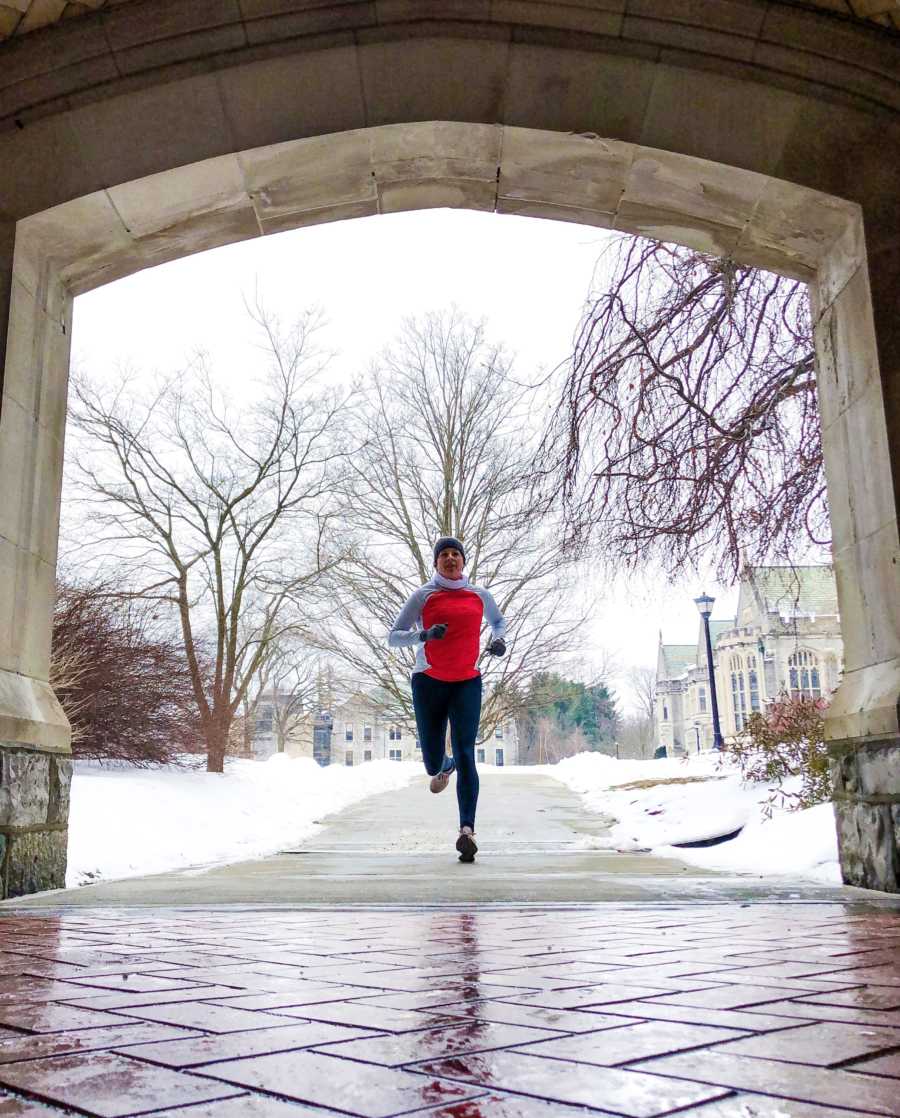
Luckily, my glaucoma doctor allowed me (after lots of begging) to push surgery until after the Wineglass Marathon, due to the extensive recovery and time off needed. However, the game plan to get me through the marathon, while keeping the pressure down enough to not go blind, just added more stress and hardship, especially to my body.
Training With Glaucoma
Again, I was prescribed multiple eye drops, which was just a way of life at this point. However, I also started taking an oral medication, four times a day, to help reduce the build-up of certain fluids in the body. More specifically, I needed to keep the pressure in my left eye at bay. Side effects included, but were not limited to, upset stomach, numbness, tingling of arms and legs, drowsiness, altered sense of taste, shortness of breath, and last but not least… extreme exhaustion. I did what I had always done — listened to the side effects and didn’t even bat an eye (no pun intended) because I knew I could push through anything, and keep running my body into the ground. That was the furthest thing from the truth.
During those final four weeks of training, I spent early mornings crying on the side of the road, wanting to quit. But I had too much pride to throw in the towel. I was ALWAYS exhausted and my easy/recovery pace for my runs, felt as if I was running hard. For those weeks leading up to surgery, and my second attempt at my goal of finishing a marathon in under four hours, I was so unbelievably negative with myself. A lot of ‘I can’t’ and ‘I won’t.’ A lot of ‘I can’t run fast anymore. I won’t be able to show up come race day. I can’t believe I thought breaking four hours was possible. I won’t have a good marathon, because I didn’t nail every workout. I’m a failure.’
I let me personal/health struggles get in the way of staying true to my training and goals. Looking back on it now, I’m ashamed to admit I had pity parties for myself daily, and allowed it to become a crutch. I tried to keep my perspective straight, keeping in mind I should be happy to even have the opportunity to run this marathon and I had bigger problems then my time goal. But I never felt SO defeated. For once in my life, I felt as if I couldn’t push through; I wouldn’t be the underdog, and worse, I couldn’t fight through another day.
Thankfully, I have a super supportive doctor, an amazing husband and family who refused to let me quit, and friends who were there at the finish line, cheering me on. I ran my best marathon to date, finishing at 4:05. Each cycle has meant so much to me, for many different reasons, but this one almost broke me. That said, I really did grow from it, and truly believe I’m a stronger person for it. I also believe it has helped me through these past three eye surgeries in the last three months.
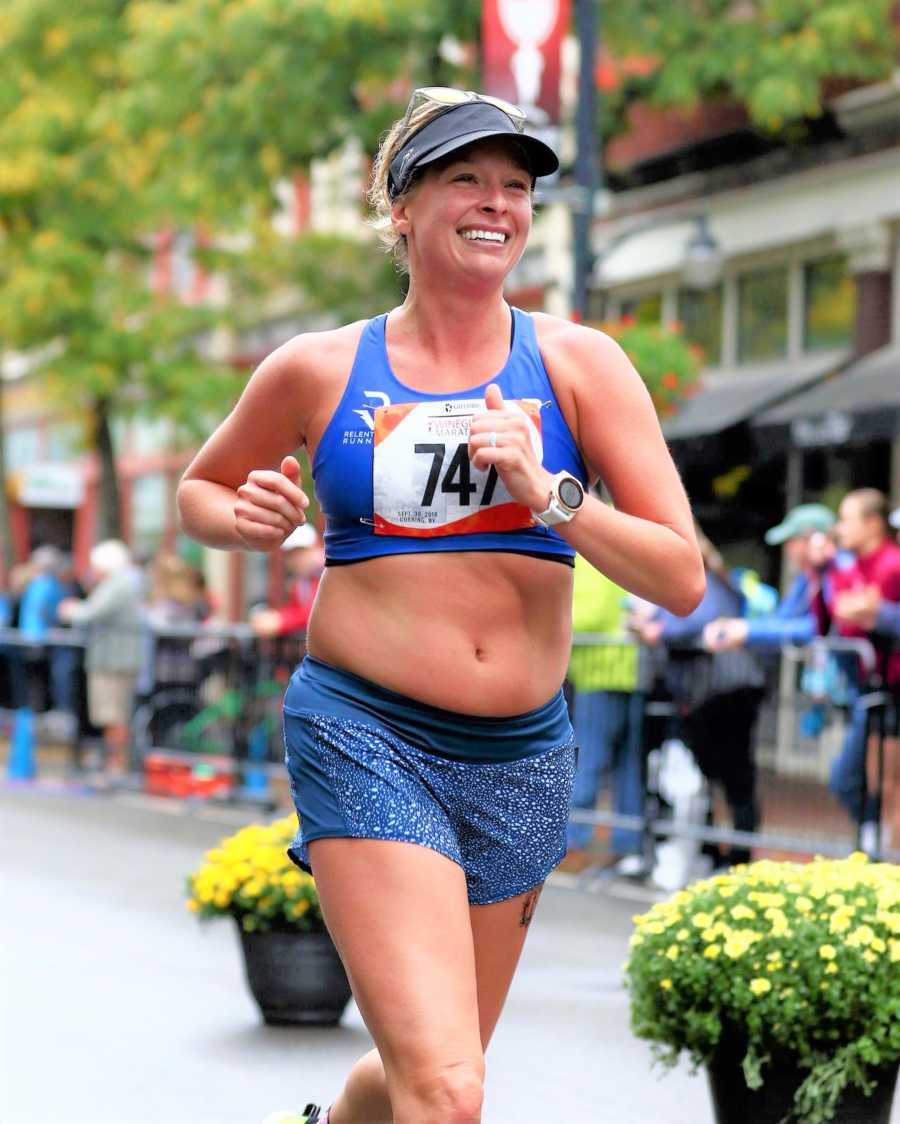
Multiple Glaucoma Surgeries
On October 3, 2018, just three days after my 7th marathon, I had my first glaucoma surgery: the tube-shunt surgery. It is the most painful surgery I have ever been through, and that’s counting ACL reconstruction surgery.After two and a half months of no running, no lifting (not even to hold my daughter), and no walking around the neighborhood, I was cleared of all restrictions and able to run again. But just five months later, I found out I would need another glaucoma surgery, now in my right eye.
While waiting for my second glaucoma surgery, I trained and ran my 8th marathon with Every Mother Counts (a non-profit organization dedicated to maternal health before, during, and after birth). It was a huge victory reaching the start line and finishing with a big smile on my face. Regardless of the finish time, I celebrated the fact I fought my way back after surgery, and I’m still fighting!

I was back to my underdog self, reminding myself how far I’ve come and what I’ve had to battle. Three weeks after the marathon, I had my second successful eye surgery (another tube-shunt surgery). Another month of recovery with restrictions. After the first surgery, I was miserable. Coming off a 4:05 marathon PR and runner’s high, my depression kicked in hard. I cried a lot, was mad at the world, and drank almost every single day. I was a mess. This time around, I vowed to go about it with a different approach. Which leads me to where I am now. Struggling through each day with a ‘healthy’ yet immunosuppressed self.
Immunosuppression Journey
I finally accepted I needed to start immunosuppression. Truthfully, if it wasn’t for running through the exhaustion before the first glaucoma surgery, and showing myself I could fight through it, I probably wouldn’t be where I am now. The end of that training cycle proved to me I could push through, continue to run, and be my athletic-driven self, regardless of the effect of medication. I may take longer to recover and not be in as tip-top shape, but I can still do what I love and what has helped me in so many ways.
Thankfully, inflammation and my uveitis are currently being kept at bay, with the help of weekly immunosuppression treatments and a biweekly Humira injection. However, avoiding such treatment for so long has done some significant, irreversible damage on my eyes. Which is why, just a month ago, I had my first cataract surgery. This surgery involved removing a cataract in my left eye, which was making it so I could barely see out of my left eye.
The inflammation from uveitis can cause a cataract to form, but in reality, it was caused by the excessive amount of steroid drops I’ve used over the past ten years. Another surgery is never good, especially on my left eye which is already 50% blind. Surgery does not correct this, nor will any surgery be able to. Luckily, yet again, I have an amazing doctor who I whole-heartedly trust, who has done a fantastic job on all of my surgeries so far. (Knock on wood because there’s more in sight— no pun intended!)
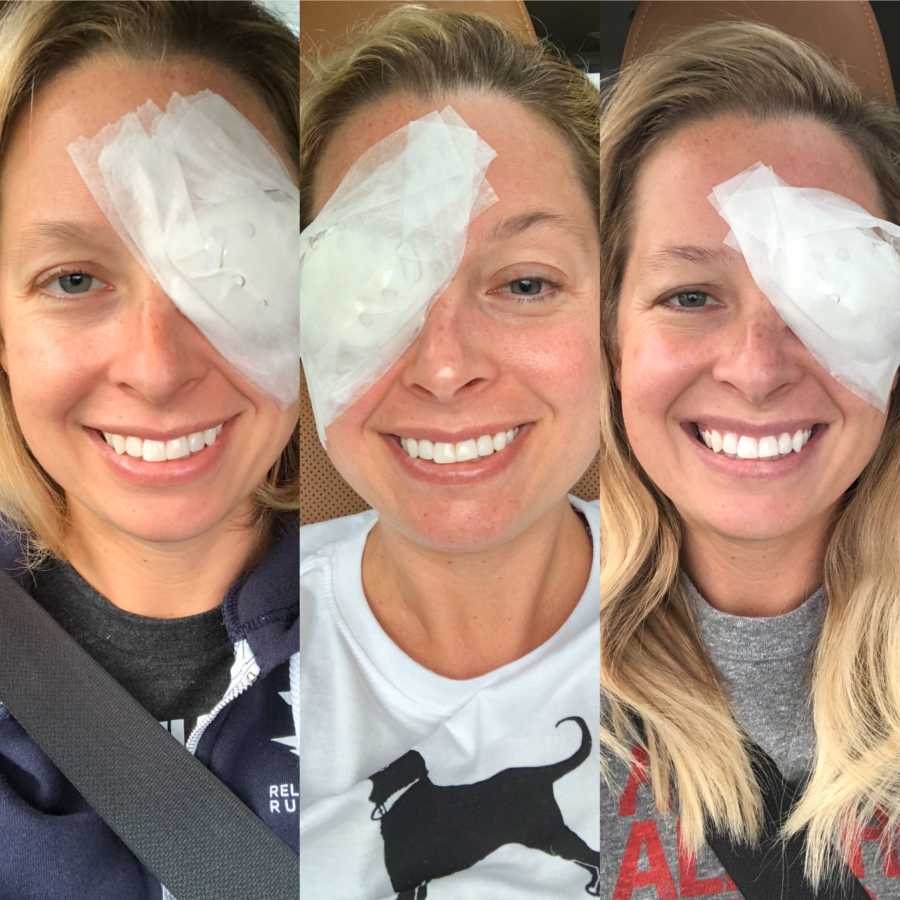
Regardless of the good surgery outcomes, it’s frustrating living with a rare disease no one can physically see, and many don’t understand. People will judge, belittle, and make their own assumptions, just because they can’t see the physical strain, pain, or effects. And through all the routine testing, to hopefully and eventually find what is causing my uveitis, many don’t realize how frustrating it is to keep receiving negative test results when you so desperately want to find out what is going on with your own body. The very body I constantly pushed to the limit, and rely on daily to never fail on me.
It’s so easy to get caught up in the frustration health problems (or any problems you may face) can bring. Want to know the main thing I take away from my story and all this uveitis madness? Tough times don’t last, but tough people do. Sometimes you have to claw yourself out of the hole you’re living in. Other times, you’re strong enough to have a better perspective. No matter how ugly it is or how hard it may get, you find a way to get through each day, regardless of what you must endure.
It’s amazing because my battle with uveitis has brought me to develop an even stronger mentality to do things I would’ve never done before, to continue to persevere, and to do whatever it takes. Never give up on your dreams and most importantly, never give up on yourself. Always believe in yourself and always believe in the underdog. Because in the end, when your back is up against the wall, you must remind yourself you have nothing to lose and EVERYTHING to gain.”
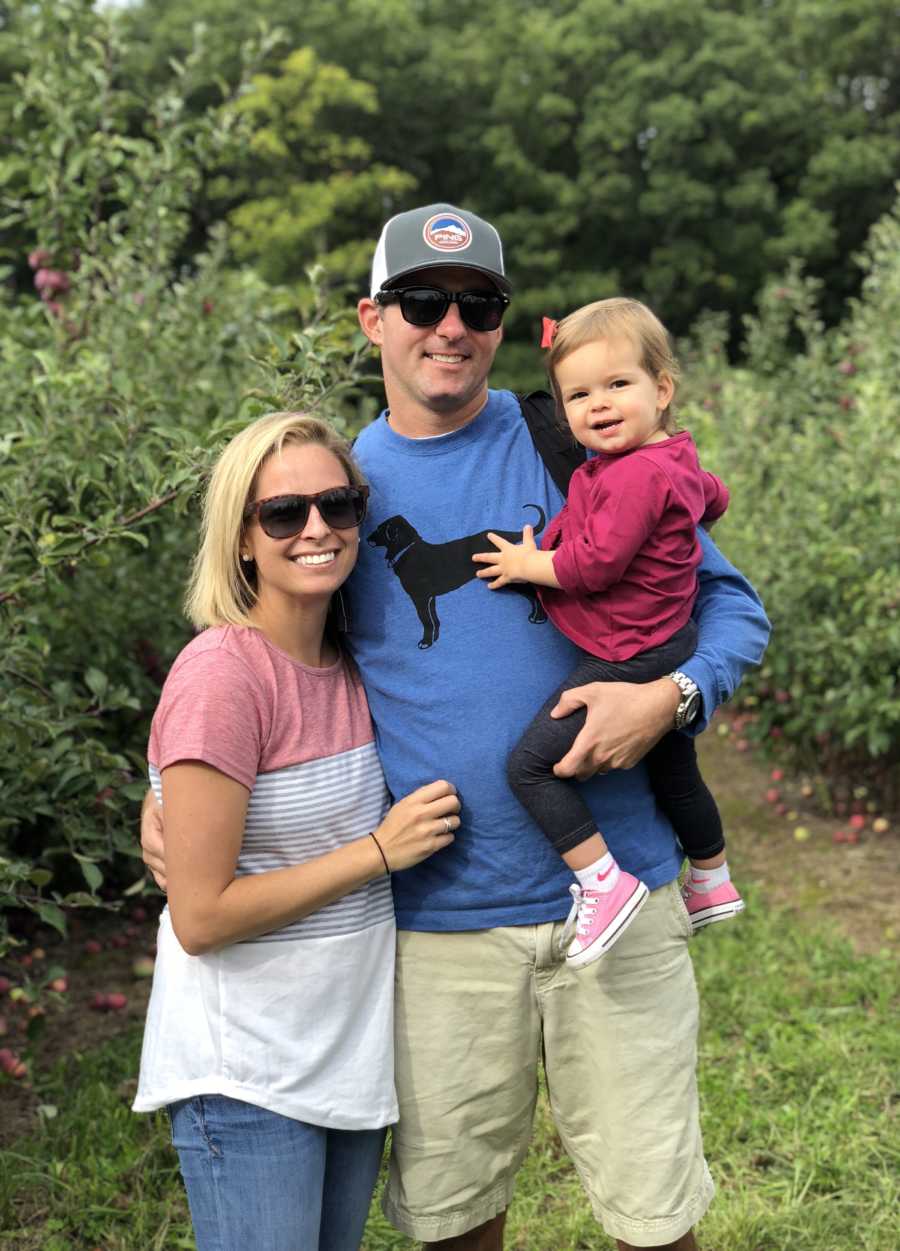
This story was submitted to Love What Matters by Kristen Garzone of Upstate NY. You can follow her journey on Instagram. Do you have a similar experience? We’d like to hear your important journey. Submit your own story here. Be sure to subscribe to our free email newsletter for our best stories, and YouTube for our best videos.
Read more stories like this:
Do you know someone who could benefit from reading this? SHARE this story on Facebook with family and friends.

